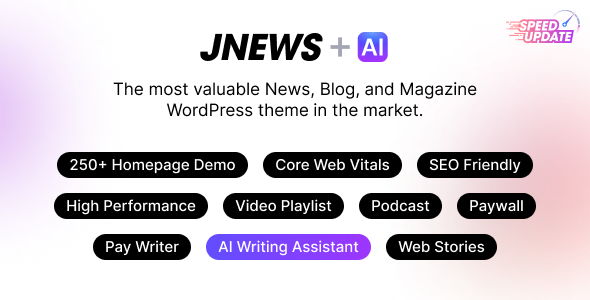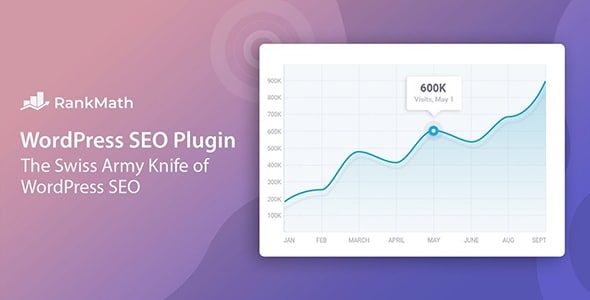WooCommerce Cart Reports 1.5.0
- Updated
- Secure Payment
- Secure Payment
WooCommerce Cart Reports: Real-time cart reports to recover sales
Managing an online store is demanding enough, but doing it blindly is a recipe for losing money. With WooCommerce Cart Reports, we transform the invisible—opened and abandoned carts—into actionable insights. This landing page is designed to show you, in a practical way, how to use WooCommerce Cart Reports to detect friction, prioritize follow-ups, and recover sales without wasting time on manual tasks.
What is WooCommerce Cart Reports and why does it matter now?
WooCommerce Cart Reports is a WooCommerce cart metrics plugin that shows you, in real time, what’s happening between “add to cart” and “checkout.” It includes reports on opened, abandoned, and converted carts, with date filters, desktop widgets, and a detailed view that reveals which products are being dropped just before checkout.
In our case, when we integrated WooCommerce Cart Reports, the first thing we noticed was a daily curve of opened carts that coincided with certain traffic peaks. This simple insight allowed us to schedule flash campaigns during peak hours and capture purchases that would otherwise have slipped through our fingers. Furthermore, combining reports by date range with the view of most abandoned products gave us focus: less guesswork, more action.
Who is it for? For eCommerce, marketing, and customer service managers who want to track carts in real time, measure abandoned cart recovery, and, above all, act quickly. If you’re searching for “WooCommerce cart reports,” “WooCommerce cart abandonment analytics,” or “WooCommerce cart dashboard,” this is the shortcut to impactful decisions.
What you’ll see on the panel: open, abandoned, and converted shopping carts (live)
The central panel of WooCommerce Cart Reports displays three key views: Open Carts, Abandoned Carts, and Converted Carts. Each view can be filtered by date and segmented to understand trends. With graphs by day, week, and month, the times when abandonment rates increase are immediately apparent. We noticed that certain payment methods coincided with higher abandonment rates, which helped us streamline the checkout process.
Detailed view of the shopping cart and most abandoned products
The detailed cart view lets you get straight to the point: what items are in the cart, the quantity, the estimated value, and the time since the last activity. When we tested it, the list of most abandoned products pointed to a SKU with slow-loading photos and a poor description. We adjusted both, and within a week the cart completion rate had improved. It wasn’t magic; it was prioritizing based on data from WooCommerce Cart Reports itself.
Desktop widgets and charts by date range
Desktop widgets provide a quick overview of cart performance without requiring complex reports. We love them for a quick morning check: seeing if the week’s cart conversion rate is above or below target. Date-range charts, on the other hand, allow you to evaluate campaigns: before vs. after. If you ran a promotion, filter by campaign dates and compare. It’s the simplest way to demonstrate that your actions are making a difference.
How we use WooCommerce Cart Reports to act faster
The difference between looking at data and turning it into money is in the process. With WooCommerce Cart Reports, our workflow is streamlined and repeatable:
-
Detect peaks in open shopping carts in real time.
-
Check for recently abandoned shopping carts with high value.
-
Launch follow-up based on segment: email/soft, WhatsApp/high order, B2B call if applicable.
-
Consolidate learning within the team (product, UX, payments).
In our daily work, filtering by abandoned carts from the last 24–48 hours allowed us to prioritize human interaction for high-value items. We also used the details view to detect patterns: for example, if a specific combo is abandoned more frequently, we converted it into a bundle with a better perceived price. These micro-decisions, when multiplied, increase recovery rates without increasing advertising spend.
Prioritize follow-ups and direct contact from the report
With carts sorted by value, the team knows who to contact first. When we have an expensive product that’s just one click away from checkout, we send a personalized reminder with clear guarantees (easy exchanges, delivery times). No need to overcomplicate things: WooCommerce Cart Reports gives us the foundation for a recovery playbook that anyone on the team can run.
Data-driven decisions: detecting friction before checkout
Another practical use is identifying friction points in the checkout process. When we detected abandonment spikes right after shipping options were selected, we reviewed costs and shipping methods. A simple note like “Trackable shipping and free changes within 10 days” reduced abandonment. We knew this because WooCommerce Cart Reports showed a drop in abandoned carts immediately after implementing the change.
Key benefits for your online store (no beating around the bush)
-
Total visibility: you know how many open carts there are and which ones are about to be converted.
-
Priority action: focus on high-value abandoned carts to maximize recovery.
-
Continuous optimization: the list of most abandoned products guides improvements to product details, photos, and stock.
-
Team efficiency: with widgets and filters, anyone can understand what to do each day.
-
Scalability: by standardizing the monitoring, the results do not depend on a single person.
When we compared weeks with and without our WooCommerce Cart Reports-based process, the difference was clear: less abandonment and a better average ticket, because high-value follow-ups became systematic.
Conclusion
If you’re serious about sales recovery, WooCommerce Cart Reports is the dashboard you need every day. It’s not about collecting charts, but about making simple, repeatable decisions: prioritizing high-value abandoned carts, fixing obvious friction points, and measuring week by week. Here’s how we experienced it: by seeing carts in real time, we stopped reacting too late and started acting when it matters.
$89.00 Original price was: $89.00.$4.99Current price is: $4.99.
- Lifetime Updates And Support
- Unlimited Website Usage
- This item is licensed 100% GPL
- Money-back Guarantee
Last Update: 03 November 2025
Version: 1.5.0
Author’s Site: Visit
Status: Original product No Activation Required.
Get in Subscription – Unlimited Downloads for $14.99/mo
- 5000+ Items
- Unlimited Usage
- Support
Frequently asked question
How many sites can I use the products on?
You can use any product from our store on any website you want.
Will I get updates?
Of course. If you buy an individual product, you’ll get lifetime updates for that purchase.
On the other hand, if you purchase a membership, you will receive updates until your membership expires.
Are the products authentic?
Yes, each product is original. The difference with the author is that we distribute under the GNU GPL v2/3 regulations/license, so we don’t provide additional services from the author, such as customizations, etc. We also don’t provide license keys, and in the case of products that require one to work, we pre-activate them so they don’t require anything and you can use them seamlessly on any website you want.
Do you provide technical support?
Yes, and regarding time, it is usually on average within 24 to 48 business hours.
Now, there are times when, in less than a day, we have already provided an answer and a solution, depending on the case.
Are there download limits?
No. We don’t believe in that format, so you can download as many times as you want. No problem. We pay for high-quality professional storage just to avoid any issues.
Do you provide license keys?
No. It’s not feasible, since we’ve already experienced keys flying everywhere, and we could lose the corresponding accounts.
That said, while all products are original, in the case of products that require a license key to operate, we will take care of pre-activating them.
Refund if product unusable?
We’re here to make sure you’re 100% satisfied with your experience. Our Customer Support Team will do everything possible to ensure you’re comfortable with placing an order and happy with the products you download. But we also know sometimes things happen.
Due to the nature of digital media means that once you have downloaded a plugin or theme there’s really no way to ‘return’ it. No refunds will be given except in the case when the digital product is completely unusable.
If the digital product is unusable, we need time to try to fix it. Otherwise, we will make a refund.
Our support team is available 24/7, if you have any question or need help in installing or configuring digital products purchased on the website, please don’t hesitate to CONTACT US.
Please note that we are not developers of the provided products, so our technical support capabilities are limited.
We do not change product functionality and do not fix developer bugs.
In case you are accepted to get refund, payment refunds are processed within 5-7 business days. All refunds are issued to the original payments. It may take up to 5 days for your refund to be reflected in your PayPal account or bank statement. If you paid using a credit or debit card, the money will be refunded to your card. Depending on your card issuer, it can take up to 30 days for the refund to appear on your card statement.
IMPORTANT! Please CONTACT US first so we can handle your issues. If you arbitrarily open a dispute without contacting us first, your account may be suspended immediately without notice.
WooCommerce Cart Reports: Real-time cart reports to recover sales
Managing an online store is demanding enough, but doing it blindly is a recipe for losing money. With WooCommerce Cart Reports, we transform the invisible—opened and abandoned carts—into actionable insights. This landing page is designed to show you, in a practical way, how to use WooCommerce Cart Reports to detect friction, prioritize follow-ups, and recover sales without wasting time on manual tasks.
What is WooCommerce Cart Reports and why does it matter now?
WooCommerce Cart Reports is a WooCommerce cart metrics plugin that shows you, in real time, what’s happening between “add to cart” and “checkout.” It includes reports on opened, abandoned, and converted carts, with date filters, desktop widgets, and a detailed view that reveals which products are being dropped just before checkout.
In our case, when we integrated WooCommerce Cart Reports, the first thing we noticed was a daily curve of opened carts that coincided with certain traffic peaks. This simple insight allowed us to schedule flash campaigns during peak hours and capture purchases that would otherwise have slipped through our fingers. Furthermore, combining reports by date range with the view of most abandoned products gave us focus: less guesswork, more action.
Who is it for? For eCommerce, marketing, and customer service managers who want to track carts in real time, measure abandoned cart recovery, and, above all, act quickly. If you’re searching for “WooCommerce cart reports,” “WooCommerce cart abandonment analytics,” or “WooCommerce cart dashboard,” this is the shortcut to impactful decisions.
What you’ll see on the panel: open, abandoned, and converted shopping carts (live)
The central panel of WooCommerce Cart Reports displays three key views: Open Carts, Abandoned Carts, and Converted Carts. Each view can be filtered by date and segmented to understand trends. With graphs by day, week, and month, the times when abandonment rates increase are immediately apparent. We noticed that certain payment methods coincided with higher abandonment rates, which helped us streamline the checkout process.
Detailed view of the shopping cart and most abandoned products
The detailed cart view lets you get straight to the point: what items are in the cart, the quantity, the estimated value, and the time since the last activity. When we tested it, the list of most abandoned products pointed to a SKU with slow-loading photos and a poor description. We adjusted both, and within a week the cart completion rate had improved. It wasn’t magic; it was prioritizing based on data from WooCommerce Cart Reports itself.
Desktop widgets and charts by date range
Desktop widgets provide a quick overview of cart performance without requiring complex reports. We love them for a quick morning check: seeing if the week’s cart conversion rate is above or below target. Date-range charts, on the other hand, allow you to evaluate campaigns: before vs. after. If you ran a promotion, filter by campaign dates and compare. It’s the simplest way to demonstrate that your actions are making a difference.
How we use WooCommerce Cart Reports to act faster
The difference between looking at data and turning it into money is in the process. With WooCommerce Cart Reports, our workflow is streamlined and repeatable:
-
Detect peaks in open shopping carts in real time.
-
Check for recently abandoned shopping carts with high value.
-
Launch follow-up based on segment: email/soft, WhatsApp/high order, B2B call if applicable.
-
Consolidate learning within the team (product, UX, payments).
In our daily work, filtering by abandoned carts from the last 24–48 hours allowed us to prioritize human interaction for high-value items. We also used the details view to detect patterns: for example, if a specific combo is abandoned more frequently, we converted it into a bundle with a better perceived price. These micro-decisions, when multiplied, increase recovery rates without increasing advertising spend.
Prioritize follow-ups and direct contact from the report
With carts sorted by value, the team knows who to contact first. When we have an expensive product that’s just one click away from checkout, we send a personalized reminder with clear guarantees (easy exchanges, delivery times). No need to overcomplicate things: WooCommerce Cart Reports gives us the foundation for a recovery playbook that anyone on the team can run.
Data-driven decisions: detecting friction before checkout
Another practical use is identifying friction points in the checkout process. When we detected abandonment spikes right after shipping options were selected, we reviewed costs and shipping methods. A simple note like “Trackable shipping and free changes within 10 days” reduced abandonment. We knew this because WooCommerce Cart Reports showed a drop in abandoned carts immediately after implementing the change.
Key benefits for your online store (no beating around the bush)
-
Total visibility: you know how many open carts there are and which ones are about to be converted.
-
Priority action: focus on high-value abandoned carts to maximize recovery.
-
Continuous optimization: the list of most abandoned products guides improvements to product details, photos, and stock.
-
Team efficiency: with widgets and filters, anyone can understand what to do each day.
-
Scalability: by standardizing the monitoring, the results do not depend on a single person.
When we compared weeks with and without our WooCommerce Cart Reports-based process, the difference was clear: less abandonment and a better average ticket, because high-value follow-ups became systematic.
Conclusion
If you’re serious about sales recovery, WooCommerce Cart Reports is the dashboard you need every day. It’s not about collecting charts, but about making simple, repeatable decisions: prioritizing high-value abandoned carts, fixing obvious friction points, and measuring week by week. Here’s how we experienced it: by seeing carts in real time, we stopped reacting too late and started acting when it matters.
You must be logged in to post a review.


















Reviews
There are no reviews yet.